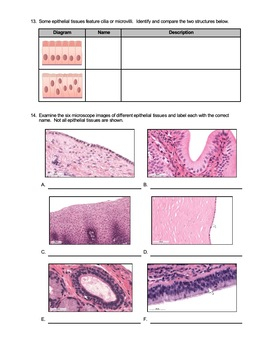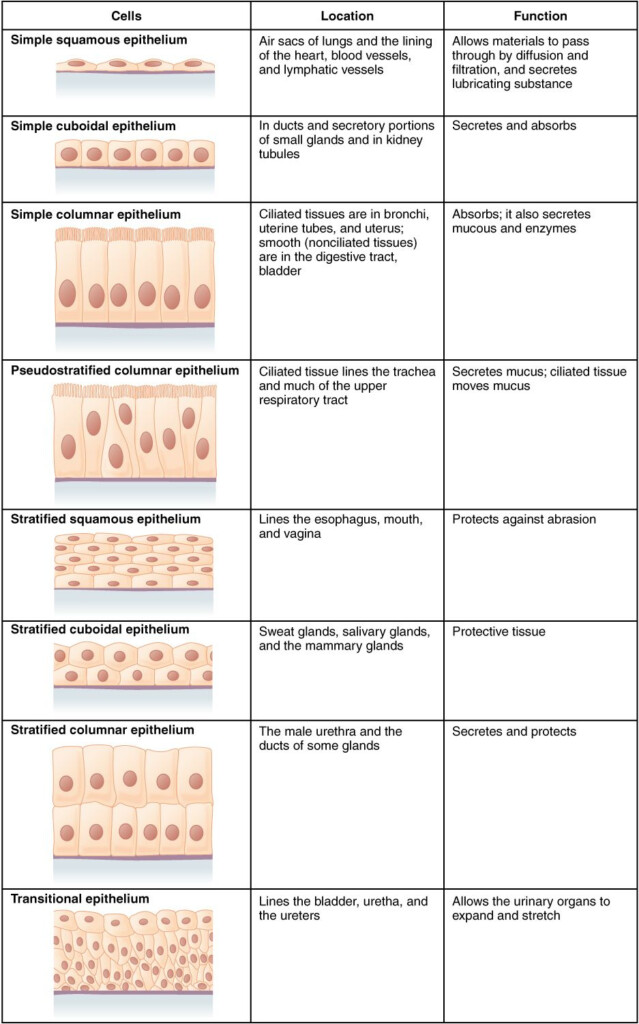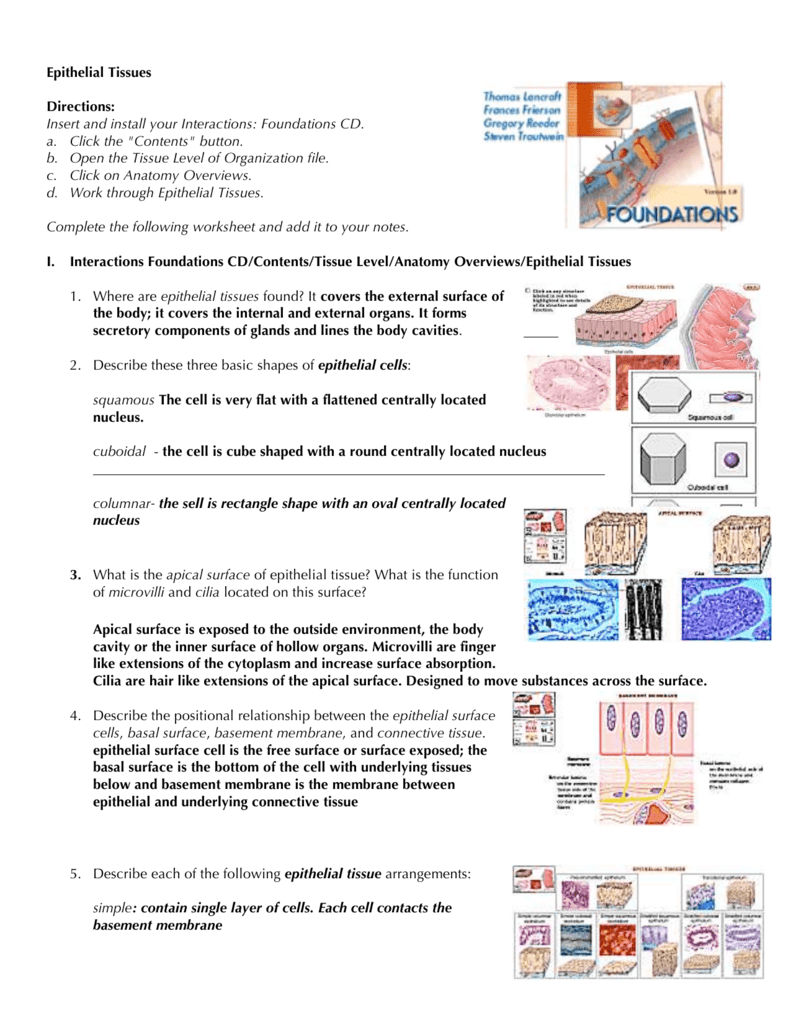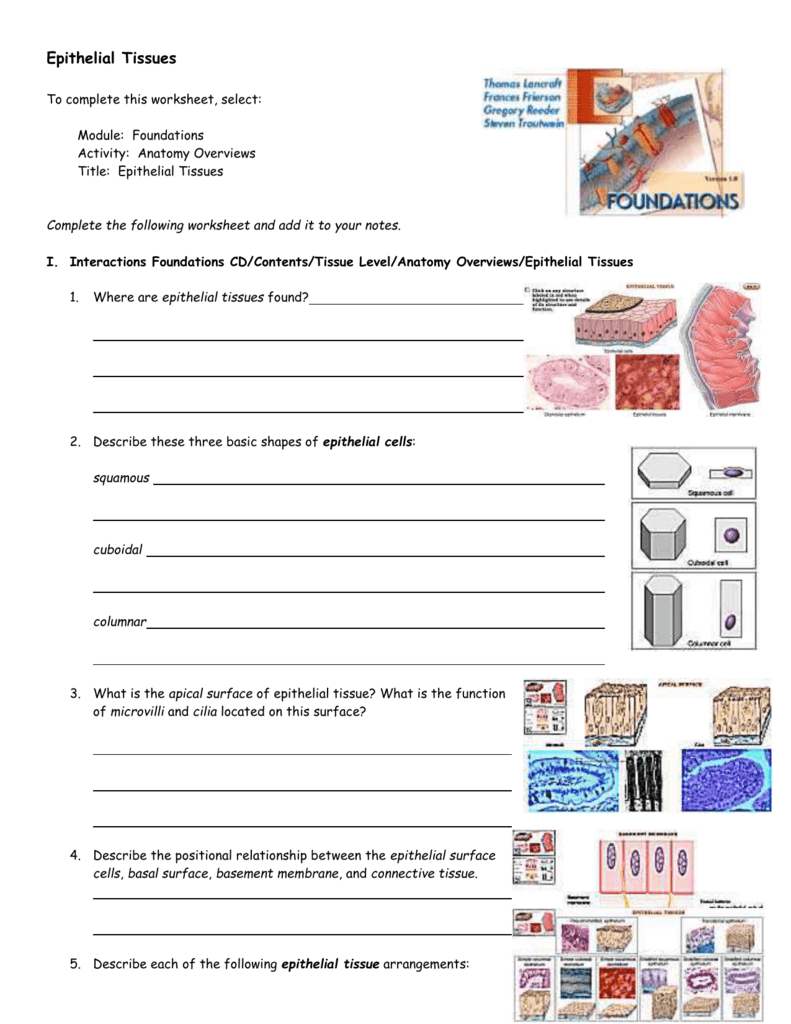Epithelial tissues are one of the four main types of tissues in the human body. They are a type of tissue that covers the surfaces of organs, lines body cavities, and forms glands. Epithelial tissues are classified based on their shape and function. There are three main shapes of epithelial cells: squamous (flat and scale-like), cuboidal (cube-shaped), and columnar (column-shaped).
Epithelial tissues play a crucial role in protecting the body from external factors such as bacteria, viruses, and toxins. They also help with absorption, secretion, and sensation. Epithelial tissues are found in the skin, respiratory tract, digestive tract, and other organs throughout the body.
Anatomy Worksheet: Epithelial Tissues
Types of Epithelial Tissues
There are several types of epithelial tissues, each with its own unique structure and function. Some common types of epithelial tissues include:
1. Simple squamous epithelium: This type of epithelial tissue is a single layer of flat cells that are found in areas where diffusion and filtration occur, such as the lining of blood vessels and air sacs of the lungs.
2. Stratified squamous epithelium: This type of epithelial tissue consists of multiple layers of flat cells and is found in areas that need protection from mechanical stress, such as the skin and the lining of the esophagus.
3. Simple cuboidal epithelium: This type of epithelial tissue is a single layer of cube-shaped cells that are found in areas involved in secretion and absorption, such as the kidney tubules and the glands.
4. Simple columnar epithelium: This type of epithelial tissue is a single layer of column-shaped cells that are found in areas involved in secretion and absorption, such as the lining of the stomach and intestines.
Functions of Epithelial Tissues
Epithelial tissues serve several important functions in the body, including:
1. Protection: Epithelial tissues act as a barrier to protect underlying tissues from mechanical injury, pathogens, and dehydration.
2. Absorption: Epithelial tissues help in the absorption of nutrients, water, and other substances from the external environment.
3. Secretion: Epithelial tissues produce and release substances such as hormones, enzymes, and mucus.
4. Sensation: Epithelial tissues contain nerve endings that help in sensation, such as touch, pressure, temperature, and pain.
Overall, epithelial tissues are essential for the proper functioning of the body and play a crucial role in maintaining homeostasis. Understanding the different types and functions of epithelial tissues is vital for students studying anatomy and physiology.
Download Anatomy Worksheet: Epithelial Tissues
Epithelial Tissue Types Anatomy Worksheet On Squamous Cuboidal Columnar
Epithelial Tissue Worksheet Anatomy Anatomy Worksheets
Anatomy Worksheet Epithelial Tissues Answers Anatomy Worksheets
Epithelial Tissue Worksheet Anatomy Anatomy Worksheets




